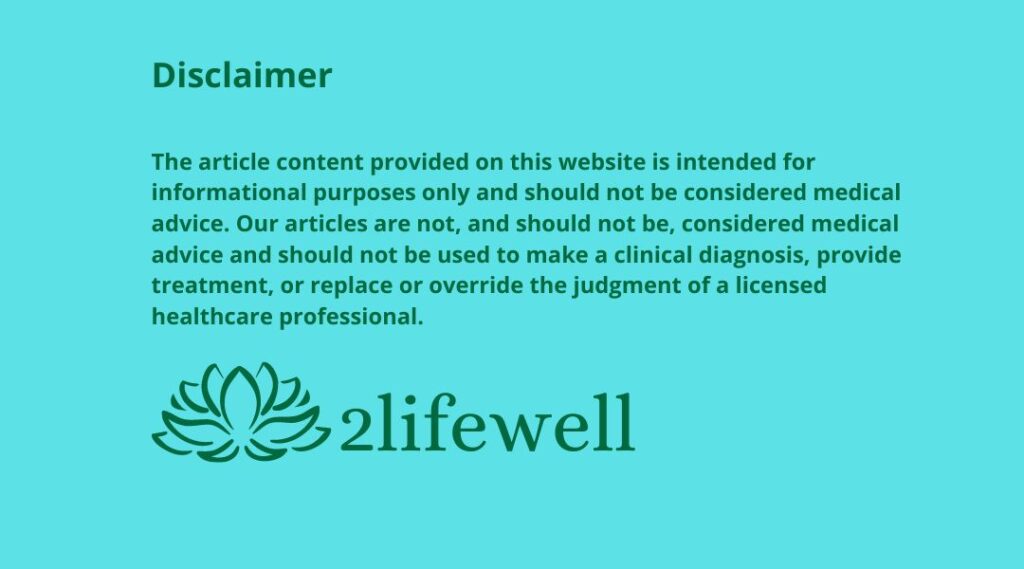Mindfulness in Daily Life: Practices to Promote Fulfillment
In today’s fast-paced world, finding moments of peace and fulfillment amidst the hustle and bustle of daily life can be a challenge. However, incorporating mindfulness into our everyday routines offers a powerful antidote to stress, anxiety, and distraction, allowing us to cultivate greater presence, awareness, and fulfillment in each moment.
In this comprehensive guide, we will explore the practice of mindfulness in daily life and discover a variety of techniques and practices to integrate mindfulness into our everyday activities. From mindful breathing and body scan meditations to practicing gratitude and mindful communication, each section will delve into practical strategies for promoting mindfulness and enhancing our overall well-being.
Let us embark on this journey together as we explore the transformative power of mindfulness in cultivating greater fulfillment and joy in our lives.
Understanding Mindfulness: A Brief Introduction
Mindfulness is the practice of bringing our attention and awareness to the present moment, with an attitude of openness, curiosity, and acceptance. In this section, we will explore the foundational principles of mindfulness and its benefits for mental, emotional, and physical well-being. From reducing stress and anxiety to improving focus and clarity, we will examine how mindfulness can enhance our quality of life and promote greater fulfillment.
The Benefits of Mindfulness for Mental Well-being
The practice of mindfulness offers a wide range of benefits for mental well-being, ranging from reducing rumination and promoting emotional regulation to enhancing resilience and fostering compassion. In this section, we will explore the scientific research supporting the benefits of mindfulness for mental health and well-being. From improving mood and self-esteem to reducing symptoms of depression and anxiety, we will examine how mindfulness can positively impact our psychological and emotional health.
Cultivating Mindfulness in Everyday Activities
Mindfulness can be practiced in any moment, in any activity, simply by bringing our attention and awareness to the present moment. In this section, we will explore practical strategies for cultivating mindfulness in everyday activities. From mindful breathing exercises to incorporating mindfulness into routine tasks such as eating, walking, and driving, we will learn how to infuse our daily lives with greater presence, awareness, and intentionality.
Mindful Breathing: Harnessing the Power of the Breath

The breath is a powerful anchor for mindfulness, serving as a gateway to the present moment and a source of calm and relaxation. In this section, we will explore the practice of mindful breathing and its benefits for promoting relaxation, reducing stress, and enhancing focus and concentration. From simple breathing exercises to more structured breathwork practices, we will learn how to harness the power of the breath to cultivate greater mindfulness and well-being.
Body Scan Meditation: Connecting with Physical Sensations
The body scan meditation is a mindfulness practice that involves systematically bringing our attention to different parts of the body, cultivating awareness of physical sensations and promoting relaxation and presence. In this section, we will explore the practice of body scan meditation and its benefits for promoting mindfulness and well-being. From reducing tension and stress to enhancing body awareness and promoting self-care, we will learn how to incorporate body scan meditation into our daily routine for greater physical and mental health.
Mindful Eating: Savoring the Present Moment
Mindful eating is a practice that involves bringing awareness and attention to the experience of eating, savoring each bite and cultivating gratitude for the nourishment it provides. In this section, we will explore the practice of mindful eating and its benefits for promoting a healthy relationship with food and enhancing overall well-being. From slowing down and savoring the flavors and textures of food to cultivating gratitude for the abundance of nourishment, we will learn how to transform our relationship with food and eating through mindfulness.
Walking Meditation: Finding Peace in Motion
Walking meditation is a mindfulness practice that involves bringing awareness to the experience of walking, focusing on the sensations of movement and the environment around us. In this section, we will explore the practice of walking meditation and its benefits for promoting relaxation, reducing stress, and enhancing presence and awareness. From practicing mindful walking in nature to incorporating walking meditation into our daily commute, we will learn how to find peace and serenity in motion through the practice of walking meditation.
Mindful Communication: Listening with Presence and Empathy
Mindful communication is a practice that involves bringing awareness and intentionality to our interactions with others, fostering deeper connection, understanding, and empathy. In this section, we will explore the principles of mindful communication and practical strategies for cultivating presence, active listening, and empathy in our conversations. From practicing deep listening to speaking with kindness and clarity, we will learn how to communicate more effectively and authentically, enhancing our relationships and promoting greater well-being.
Practicing Gratitude: Cultivating Appreciation for the Present Moment

Gratitude is a powerful practice that involves cultivating appreciation and thankfulness for the abundance in our lives, both big and small. In this section, we will explore the practice of gratitude and its benefits for promoting mindfulness and well-being. From keeping a gratitude journal to expressing appreciation for the people and experiences in our lives, we will learn how to cultivate a mindset of gratitude and abundance, enhancing our overall happiness and fulfillment.
Practicing Gratitude: Cultivating Appreciation for the Present Moment
Gratitude is a powerful practice that involves cultivating appreciation and gratitude for the abundance in our lives, both big and small. In this section, we will explore the practice of gratitude and its benefits for promoting mindfulness and well-being. From keeping a gratitude journal to expressing appreciation for the people and experiences in our lives, we’ll learn how to cultivate a mindset of gratitude and abundance, increasing our happiness and overall fulfillment.
Gratitude Journal: A Path to Full Consciousness
One of the most effective ways to practice gratitude is to keep a gratitude journal. This journal serves as a personal space where we can record daily the things we are grateful for. By taking a moment each day to reflect and write down these gratitudes, we train our mind to focus on the positive things happening around us. This habit can be especially useful for diverting attention from daily worries and stress, promoting a more positive and resilient mindset.
Expressing Gratitude: Strengthening Relationships
The practice of expressing gratitude goes beyond personal benefit; it also strengthens our interpersonal relationships. Sincerely thanking the people around us – whether through small gestures or ongoing support – creates an atmosphere of mutual recognition and respect. A simple “thank you” can make a significant difference in the way people feel valued and connected. Additionally, showing gratitude openly can inspire others to do the same, creating a positive cycle of support and appreciation.
Gratitude for Experiences: Valuing the Past and Present
Another important aspect of gratitude is learning to value the experiences that shaped our journey. This includes both positive and challenging experiences. Positive experiences provide us with joy and happy memories, while challenging experiences provide opportunities for growth and learning. Recognizing the value of all experiences helps us cultivate a more balanced and resilient outlook, allowing us to face the future with more confidence and gratitude.
Cultivating an Abundance Mindset

Practicing gratitude consistently can transform our scarcity mindset into an abundance mindset. Instead of focusing on what we lack, we begin to notice and appreciate the many blessings in our lives. This does not mean ignoring challenges or difficulties, but rather recognizing that, even in the midst of adversity, there are reasons to be grateful. This change in perspective allows us to live with more contentment and satisfaction, making the most of each present moment.
Benefits of Gratitude for Mental and Physical Health
Numerous studies demonstrate that regularly practicing gratitude is associated with a range of mental and physical health benefits. People who practice gratitude regularly tend to experience lower levels of stress and depression, as well as a greater sense of well-being and happiness. Gratitude can also improve sleep quality, strengthen the immune system, and increase emotional resilience. These benefits contribute to a more balanced and healthy life.
Mindfulness in Work and Productivity
Mindfulness can enhance our productivity and effectiveness in the workplace by promoting focus, creativity, and resilience. In this section, we will explore practical strategies for incorporating mindfulness into our workday. From practicing mindfulness meditation to taking mindful breaks and setting mindful intentions, we will learn how to leverage the power of mindfulness to optimize our performance and well-being in the workplace.
Mindfulness and Stress Reduction: Techniques for Finding Calm Amidst Chaos
Mindfulness offers powerful tools for managing stress and finding calm amidst the chaos of daily life. In this section, we will explore techniques for using mindfulness to reduce stress and promote relaxation. From practicing mindfulness-based stress reduction techniques to incorporating mindfulness into our daily stress management routines, we will learn how to cultivate greater resilience and well-being in the face of stressors.
Mindfulness and Emotional Regulation: Navigating Difficult Emotions with Awareness
Mindfulness can help us navigate difficult emotions with greater ease and understanding, allowing us to respond to challenges with clarity and compassion. In this section, we will explore techniques for using mindfulness to regulate our emotions and promote emotional well-being. From practicing mindful breathing to cultivating self-compassion and acceptance, we will learn how to cultivate greater emotional resilience and balance through mindfulness.
Mindful Relationships: Fostering Connection and Understanding
Mindfulness can deepen our connections with others and foster greater understanding and empathy in our relationships. In this section, we will explore how to bring mindfulness into our interactions with others to promote deeper connection and communication. From practicing mindful listening to approaching conflicts with compassion and curiosity, we will learn how to cultivate more fulfilling and harmonious relationships through mindfulness.
Mindfulness and Self-Compassion: Nurturing Kindness Towards Oneself
Self-compassion is an essential component of mindfulness, allowing us to treat ourselves with kindness and understanding in moments of difficulty and challenge. In this section, we will explore techniques for cultivating self-compassion through mindfulness practice. From practicing loving-kindness meditation to developing a more compassionate inner dialogue, we will learn how to nurture greater kindness and acceptance towards ourselves, promoting greater well-being and resilience.
Mindful Parenting: Bringing Presence and Awareness to Parent-Child Interactions
Mindfulness can transform our experience of parenting, allowing us to approach our interactions with our children with greater presence, patience, and compassion. In this section, we will explore techniques for incorporating mindfulness into parenting. From practicing mindful listening to cultivating patience and empathy, we will learn how to bring greater awareness and intentionality to our interactions with our children, fostering deeper connection and understanding.
Mindfulness and Creativity: Unleashing Inspiration Through Present Moment Awareness
Mindfulness can enhance our creativity by allowing us to access a state of flow and inspiration through present moment awareness. In this section, we will explore how mindfulness can fuel our creative process and unlock our creative potential. From practicing mindfulness meditation to engaging in mindful activities such as journaling and creative visualization, we will learn how to tap into our innate creativity and bring greater innovation and inspiration to our lives.
Mindfulness and Creativity: Unleashing Inspiration Through Present Moment Awareness
Mindfulness has a profound impact on our creativity, enabling us to access a state of flow and inspiration by being fully present in the moment. In this section, we’ll delve deeper into how mindfulness can fuel our creative process and unlock our creative potential. From engaging in mindfulness meditation to incorporating mindfulness into our creative activities such as writing, painting, or crafting, we’ll explore practical techniques to stimulate creativity. By embracing mindfulness, we can tap into our innate creativity and bring forth innovative ideas and solutions in our lives.
Tip for Creativity: Set aside dedicated time for creative exploration without judgment or expectation. Allow yourself to play and experiment freely, embracing mistakes as opportunities for growth and learning. Remember, the creative process is about expression and discovery, not perfection.
Mindfulness and Physical Health: Supporting Well-being Through Mind-Body Connection
Mindfulness practices promote holistic well-being by nurturing a deeper connection between mind and body. In this section, we’ll delve into the benefits of mindfulness for physical health and explore practical strategies to incorporate mindfulness into our wellness routine. From mindful movement practices like yoga and tai chi to mindful eating and body scan meditations, we’ll discover how mindfulness enhances our physical health. By cultivating mindfulness, we can support our body’s natural healing processes and cultivate a greater sense of vitality and balance in our lives.
Tip for Physical Health: Prioritize regular movement and nourishing foods that support your body and mind. Practice mindful eating by savoring each bite and paying attention to your body’s hunger and fullness cues. Remember to listen to your body and honor its needs with compassion and care.
Mindfulness and Sleep: Practices for Improving Sleep Quality
Mindfulness practices offer effective tools for improving sleep quality by reducing stress and promoting relaxation. In this section, we’ll explore techniques to enhance our sleep hygiene and cultivate better sleep habits. From establishing a calming bedtime routine to practicing relaxation techniques like deep breathing and progressive muscle relaxation, we’ll discover how mindfulness can facilitate a restful night’s sleep. By incorporating mindfulness into our nightly routine, we can create the conditions for deep and rejuvenating rest, supporting our overall health and well-being.
Tip for Better Sleep: Create a soothing bedtime ritual to signal to your body that it’s time to wind down. Avoid screens and stimulating activities before bed, and instead, engage in calming practices like gentle stretching, reading, or listening to soothing music. Make your sleep environment conducive to rest by keeping it cool, dark, and quiet, and prioritize consistency in your sleep schedule to regulate your body’s internal clock.
Overcoming Common Challenges in Mindfulness Practice
While mindfulness offers numerous benefits, it’s not uncommon to encounter challenges along the way. In this section, we’ll explore common obstacles in mindfulness practice and offer strategies for overcoming them. From dealing with wandering thoughts and distractions to managing resistance and self-judgment, we’ll learn how to navigate these challenges with greater resilience and compassion. By approaching our mindfulness practice with patience and perseverance, we can cultivate a deeper sense of presence and well-being in our lives.
Tip for Overcoming Challenges: Embrace a beginner’s mindset and approach each meditation session with curiosity and openness. Remember that mindfulness is a practice, and like any skill, it requires time and dedication to develop. Be gentle with yourself and celebrate small victories along the way, knowing that every moment of presence is a step forward on your journey of self-discovery and growth.
Cultivating a Mindful Lifestyle: Incorporating Mindfulness Into Daily Routine
In this final section, we’ll explore how to integrate mindfulness into our daily lives and cultivate a mindful lifestyle. From setting intentions and creating mindfulness rituals to finding community and support for our practice, we’ll learn how to make mindfulness an integral part of our daily routine. By weaving mindfulness into the fabric of our lives, we can enhance our overall well-being and experience greater fulfillment and joy in each moment.
Tip for Mindful Living: Start small and be consistent in your practice. Incorporate mindfulness into everyday activities like brushing your teeth, washing dishes, or walking to work. Use reminders such as alarms or sticky notes to prompt moments of mindfulness throughout the day. Cultivate an attitude of curiosity and kindness towards yourself and others, knowing that each moment is an opportunity for growth and connection.
Books:
- “The Miracle of Mindfulness: An Introduction to the Practice of Meditation” – Thich Nhat Hanh-https://amzn.to/3Vvs68h
- “Wherever You Go, There You Are: Mindfulness Meditation in Everyday Life” – Jon Kabat-Zinn- https://amzn.to/4clL5J2
- Kabat-Zinn, one of the pioneers of the mindfulness movement in the West, explores how mindfulness practice can be integrated into all areas of life.
- “Mindfulness for Beginners: Reclaiming the Present Moment—and Your Life” – Jon Kabat-Zinn-https://amzn.to/45xRi2j
- An accessible guide for beginners who want to learn how practicing mindfulness can improve quality of life and promote mental well-being.
- “The Mindful Path to Self-Compassion: Freeing Yourself from Destructive Thoughts and Emotions” – Christopher Germer-https://amzn.to/3KOVhOI
- Germer combines mindfulness and self-compassion, offering practices for dealing with negative thoughts and emotions and promoting mental fulfillment.
- “The Headspace Guide to Meditation and Mindfulness: How Mindfulness Can Change Your Life in Ten Minutes a Day” – Andy Puddicombe-https://amzn.to/3KNtkXi
- Puddicombe, co-founder of the Headspace app, offers a practical guide to incorporating mindfulness into your daily routine in a simple and effective way.
- Thich Nhat Hanh offers a practical guide on how to incorporate mindfulness practice into daily life to achieve inner peace and mental fulfillment. https://amzn.to/3XzLtzg
Scientific articles:
- “Mindfulness-based stress reduction and health benefits: A meta-analysis” – Grossman, Niemann, Schmidt, & Walach (2004)
- Meta-analysis examining the benefits of Mindfulness-Based Stress Reduction (MBSR) for mental and physical health.
- “The benefits of being present: Mindfulness and its role in psychological well-being” – Brown & Ryan (2003)
- Explores how the practice of mindfulness is associated with psychological well-being and the reduction of symptoms of depression and anxiety.
- “Mindfulness practice leads to increases in regional brain gray matter density” – Hölzel et al. (2011)
- Study that investigates the neuroanatomical changes associated with the regular practice of mindfulness.
- “Mindfulness training modifies subsystems of attention” – Jha, Krompinger, & Baime (2007)
- Analyzes how mindfulness practice can improve attentional function and emotional regulation.
- “Effects of mindfulness on psychological health: A review of empirical studies” – Keng, Smoski, & Robins (2011)
- Review of studies examining the effects of mindfulness practice on psychological health, including reductions in anxiety and stress.
Book Chapters:
- “Handbook of Mindfulness: Theory, Research, and Practice” – Chapter on the application of mindfulness in daily life by Kirk Warren Brown, J. David Creswell, and Richard M. Ryan (2015)-https://amzn.to/4bUYisx
- Offers a comprehensive overview of how mindfulness practice can be integrated into everyday life to improve well-being.
- “Mindfulness and the Therapeutic Relationship” – Chapter on the importance of mindfulness in clinical practice by Steven F. Hick and Thomas Bien (2008). https://amzn.to/3XfAxVZ
- Explores how mental health professionals can use mindfulness practices to improve the therapeutic relationship and treatment outcomes.
- “Compassion and Wisdom in Psychotherapy” – Chapter on the practice of mindfulness and compassion in therapy by Christopher Germer and Ronald D. Siegel (2012). https://amzn.to/3ZgpfUe
- Discusses the integration of mindfulness and compassion in psychotherapy to promote mental health and well-being in clients.

